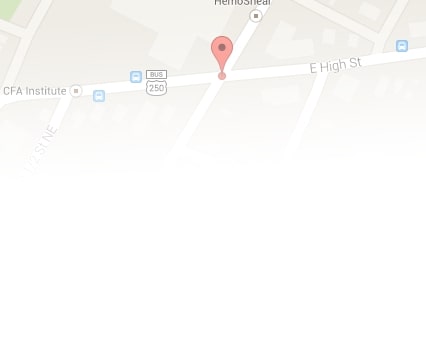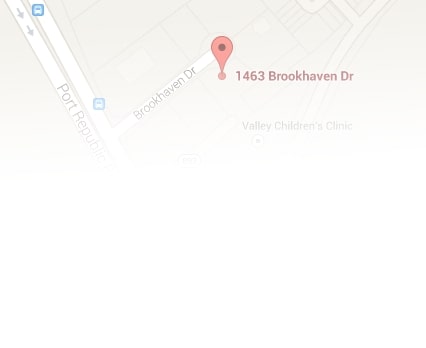How to Best Deal With a Herniated Disc Injury Sustained in an Accident
If you have suffered a herniated disc in an accident and are determining how to proceed, your first long-term concern should be focusing on your recovery. Disc injuries can be debilitating. You want to make sure you are doing everything you can to get as well as you can.
You may also be trying to learn about what legal options are available to you. Please consider this article as information for what you might want to know about your herniated disc injuries, as well as what a legal case might entail. Let’s start with a basic understanding of the anatomy of the human spine, vertebrae, and intervertebral discs.
Understanding the Spine
The human spine is divided into three major sections or regions of vertebrae, which are the bones in the spine. The very top of the spine at the neck is the cervical spine. These sections have the spinal cord passing through it, and there are a number of nerves shooting out to the hands, arms, and shoulders. The cervical region has seven vertebrae. These are often called C1-C7.
Just below the cervical spine is the thoracic section. This section includes twelve separate vertebrae. The spinal cord also passes through this section, and it has nerves shooting out between the vertebrae to the back, chest, abdomen, and portions of the arms. These are often called T1-T12.
The lowest section is called the lumbar section. The lumbar spine has five vertebrae and is found in a person’s lower back. The nerves in the lumbar section shoot out to the lower back, buttocks, and legs. These are typically called L1-L5.
Finally, right at the bottom of the spine is the sacrum. This has different separate bones, including the coccyx and sacrum.
That’s some technical stuff.
The vertebrae on a spine are stacked into a vertical column. They work together to allow movement, including stretching, twisting, and compression. All of this movement needs to be careful not to pinch the nerves that shoot out from each spinal region.
The main way these shooting nerves are protected from being pinched are what are called intervertebral discs. One doctor I know said to think of these discs like they are jelly doughnuts. There is an outside shell, like a donut, and then there is jelly inside the shell. This discs, like jelly doughnuts, are little shock absorbers between each vertebral bone. Healthy discs have plenty of jelly in them, and these keep discs apart from one another. They also prevent vertebrae from compressing nerves and act as shock absorbers.
This explains how the spine is supposed to work. Healthy discs allow movement, but not too much movement. They do not allow the bones to move so much that nerves are pinched.
A disc herniation, protruding disc, or bulging disc occurs when the outside of a disc tears, cracks, or ruptures. That causes the disc jelly (or nucleus) to push through the outer wall of the disc.
This is where trouble can occur in a couple of ways. The spaces around the spine and the nerves can be pretty tight. And there are a lot of nerves that run through those narrow spaces. Sometimes, the herniated nucleus pushes against a nerve. This can cause what is called compression or pinching of the nerve. That can cause sharp and excruciating pain. That pain often radiates into different parts of the body that are served by the nerve, including the arms, legs, hands, and feet. Depending on which nerve is impacted, this shooting, sharp pain may be considered sciatica or radiculopathy. This can be extremely painful. Depending on each case, a compressed nerve can often cause a tingling, numb, or painful situation. It all depends on where and how the nerve is compressed.
One other thing can happen when a disc is herniated. A healthy disc can make sure there is enough space between one vertebrae and the next. When a disc is herniated, the vertebrae get closer together. That, too, can cause compression or pinching of nerves.
For a legal consultation with a personal injury lawyer, call (434) 817-3100
How Disc Injuries Are Dealt With in Litigation
A tear or rupture to a disc wall can occur in a number of situations, including when traumatic forces cause a disc to tear or rupture. Disc herniations, ruptures, or bulges often occur in automobile accidents or trucking crashes where the forces generated by collisions, especially rear-end collisions, create forces so strong that discs can tear or rupture.
There are a couple of issues that always come up with disc injury cases. One of the main issues that comes up is whether the injury was caused by the crash or whether it is just part of degeneration. The truth is, most people who have reached early adulthood have started the degeneration process that affects everyone’s spine. In fact, many people have disc bulges, but those bulges are asymptomatic. In other words, those people have a condition that causes a disc bulge but they do not have any symptoms from the bulging disc.
The key to keep in mind for these cases is to see how the new injury impacts the injured person. It may be the case that a bulge that was previously asymptomatic has now become symptomatic. That becomes a big problem because now the injured person is dealing with significant consequences that they did not have before the crash.
Another issue that the defense will raise in disc injury cases is to claim that the crash forces were not sufficient to cause a herniation. They may claim that it is impossible to herniate a disc in a crash. Your experience will obviously tell you a different story.
Disc injuries are very serious injuries and they may require lots of medical treatment. Once a disc herniation has been identified through an MRI or CT scan, the injured patient may have no choice but to undergo extensive and invasive surgery. There are many different types of disc surgeries, including a discectomy, hemilaminectomy, or laminectomy. After that, the patient may have physical therapy to regain strength, mobility, and flexibility.
Even after a surgery, medical literature shows that disc-injury survivors may need additional surgeries because of what is called adjacent segment disease. When this occurs, the injury can be life altering and catastrophic.
If you have suffered disc-related injuries in an accident due to someone else’s fault (or if your disc conditions were made worse as a result of a crash), we can help. You may have a long and expensive road to recovery. But you may also be entitled to compensation for your losses by making a claim against the insurance company of the other driver to help offset some of the losses you suffered.
To get a better idea regarding how you should proceed if you have grounds for a lawsuit, please see our articles regarding What you Should do if You Have Been Injured in an Accident, including When You Should Hire an Attorney, How to Pay for an Attorney, and Understanding Statutes of Limitations. MartinWren, P.C. attorney Robert Byrne has experience with disc injury matters and would be happy to speak with you if you or a loved one have suffered a disc injury. Call us today if you’d like to schedule a free consultation.
Robert E. Byrne, Jr., the author of this post, is a trial lawyer who serves as managing attorney of MartinWren, P.C. Bob is the first and only attorney in Virginia who is Board Certified in Truck Accident Law by the National Board of Trial Advocacy.
Call (434) 817-3100 or complete a Case Evaluation form




